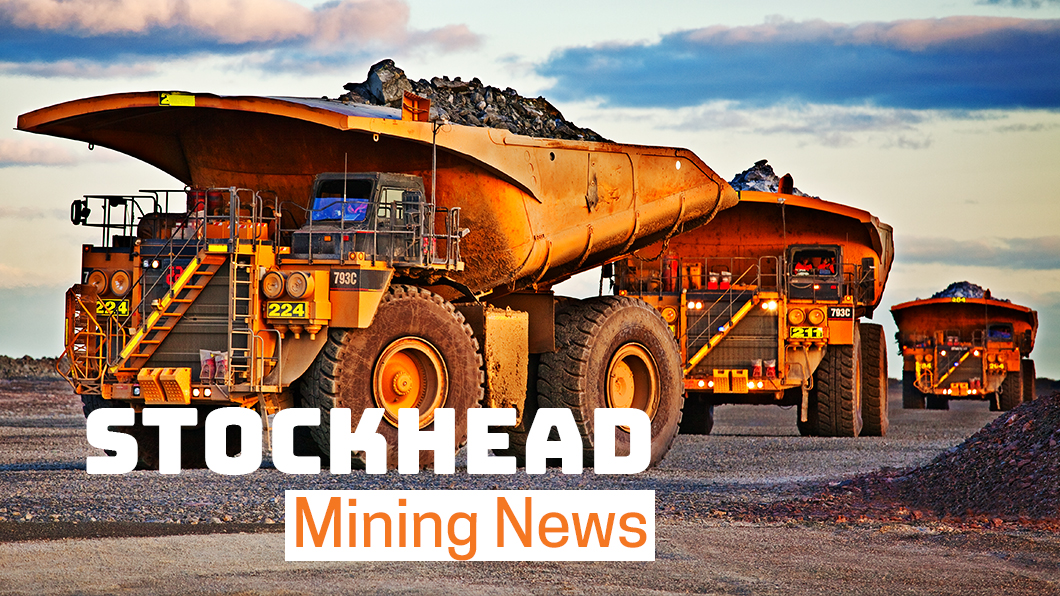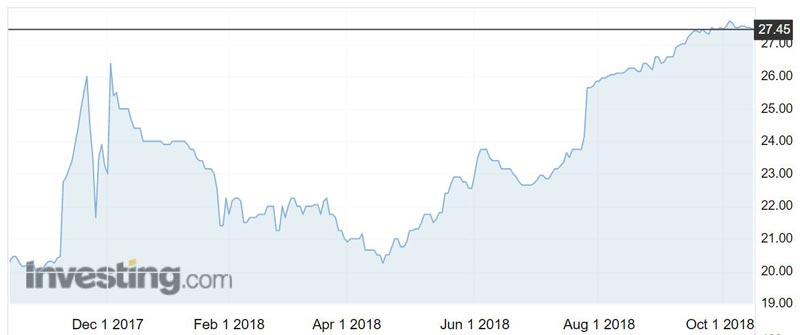Here are the resources stocks fancied by big-wig fund managers

Pic: John W Banagan / Stone via Getty Images
Investment funds are picking up the pace and injecting more cash in the resources market — and several ASX small-cap miners are benefiting.
Lithium producer Tawana Resources (ASX:TAW), uranium explorer Boss Resources (ASX:BOE), nickel and cobalt explorer Jervois Mining (ASX:JRV), zinc explorer Superior Lake Resources (ASX:SUP) and Euro Manganese (ASX:EMN) are among those that have investment funds on their respective share registers.
West Perth-based Resource Capital Funds is a large fund, with around $3.6 billion worth of investments.
In its lifetime, the company has raised six private equity funds with total committed capital of $4 billion.
Gold hopeful Geopacific Resources (ASX:GPR), mineral sands producer MZI Resources (ASX:MZI) and uranium explorer Vimy Resources (ASX:VMY) are among 179 mining companies RCF has invested in since it was formed in 1998.
Tribeca Investment Partners and Terra Capital are two other well-known funds that are in the process of ramping up their investments in the resources space.
Tribeca invests globally in energy, traditional metals and “bulks” — like iron ore — services and “soft commodities”.
All up that’s an $8.5 trillion “investment universe”, co-portfolio manager Craig Evans told Stockhead.
- Subscribe to our daily newsletter
- Bookmark this link for small cap news
- Join our small cap Facebook group
- Follow us on Facebook or Twitter
Tribeca has around $1 billion invested currently, but only about 30 per cent of its portfolio is made up of small caps and just 7.5 per cent of the investments are in ASX-listed companies.
The fund has a maximum limit of 70 stocks in its portfolio at any one time.
“Probably two thirds to 70 per cent of our portfolio is in Canada, the US and Europe at the moment,” Mr Evans said.
Tribeca has also just launched an investment fund that listed on the ASX last week.
It raised $157.5 million in its IPO from 2600 investors and it has already started rolling out the funds to build its portfolio.
Tribeca’s goal is to “deliver to investors a compound annual return in excess of 15 per cent after fees and expenses over the long-term.
“We turnover the portfolio between six and eight times a year, so we’re very active in the way we manage the portfolio,” Mr Evans said.
“Most people find it very tricky to invest in this space directly themselves.
“There’s always a lot of people touting specialist investment, but there’s probably no sector that needs specialist investors quite as much as this one in terms of people going to site, checking management, checking operations, checking resources and so on.”
Terra Capital, meanwhile, is working to raise $30 to $50 million for a new offshore resources fund, which has a maximum capacity of $300 million.
It has about $85 million in its initial resources fund — which also has a capacity of $300 million — for resources investment.
Terra’s rationale for investment is a good management team, low-cost, high-margin production assets or pre-production assets that are scalable, and projects in countries that have low political risk.
“First and foremost, we prefer to invest in first world jurisdictions,” chief investment officer Jeremy Bond told Stockhead.
“I think 70 per cent of the underlying assets in the companies that we hold are either in Australia, Canada or the US.”
What’s hot
Both funds agree that the supply side is looking very promising at the moment, with majors still trying to pick themselves up after the prolonged period of depressed commodity prices.
“We don’t see the majors doing a lot of greenfield or even brownfields [exploration],” Tribeca’s Mr Evans said.
Greenfields is exploration done in new areas where mineral deposits have not yet been discovered.
Brownfields is exploration done close to previously discovered deposits and mines.
This is the type of exploration usually done by producers to “grow” a “resource” or “reserve” — to boost production and extend the mine life.
“They’re still paralysed quite a lot of these large-cap companies in terms of having really been hammered by poor commodity prices up to that period of end of 2014, early 2015,” Mr Evans said.
“Our view is most of the supply side is probably going to come from mid-cap, small-cap, maybe even micro-cap.
“We are in that type of market where the big caps aren’t building. So they’re probably coming to buy. We’re starting to see a bit of [merger and acquisition activity] kick-up globally.
Mr Evans predicts that in the next six to 12 months the majors will start doing acquisitions valued at between $500 million and $2 to $3 billion to “buy in some supply side growth”.
Copper and nickel
This makes copper particularly interesting.
“I think copper is definitely something that most of the majors are looking at and want to be doing more in,” Mr Evans said.
He also sees more consolidation in the battery metals sector.
“It’s probably more mid-cap and small-cap either mergers or a mid-cap taking a few small-caps on where they see quality, consolidating, becoming a bigger company and potentially then the pathway is the bigger guys end up buying that,” Mr Evans said.
“In terms of production it’s all pretty fragmented, so we’d say a bit of M&A is required there.”
Terra Capital’s Mr Bond, meanwhile, sees constrained supply in nickel and copper.
“I think you’re going to see a supply squeeze in nickel,” he said.
“I wouldn’t be surprised to see that the price could be relatively volatile, and to the upside as well, at some point either this year or next year.
“I think copper a couple of years out looks really good and the market looks really tight. And in both those commodities there really isn’t huge supply that can come back on either.”
Mineral sands
Mineral sands — old beach sands that contain zircon, ilmenite and other minerals — is another commodity of choice.
Ilmenite is the main source of titanium dioxide, a white pigment used in paints, fabrics, plastics, paper, sunscreen, food and cosmetics.
Zircon has a high melting point, making it ideal for use in engines, electronics, spacecraft and the ceramics industry.
“The mineral sands market is really strong and [there are] not really that many ways to play it,” Mr Bond said. “The prices are really good at the moment.”
Uranium
Both Terra Capital and Tribeca also think uranium is going places.
Investor interest in uranium stocks has picked up following news in late July that Canadian uranium heavyweight Cameco indefinitely suspended production at its McArthur River mine.
It was the world’s largest uranium mine producing more than 8 million kg of uranium.
The move removes 11 per cent of global supply from the market and Cameco will still need to source material from the market to fill contracted sales positions, which will put an even bigger strain on a market that is already in deficit.
Uranium has been in the doldrums for a long time, but things are looking up, with the spot price recently reaching a two-and-a-half year high of $US27.70 ($38.82) per pound (see chart below) – a 36.5 per cent gain in the past year.

Uranium is more of a longer-term play though, according to Tribeca’s Mr Evans.
“The spivvy end of the market is kind of buying a lot of lottery tickets in the uranium space,” he said.
“So we’re doing a deep dive in terms of trying to assess who’s got what costs of production, what timeframe to production, speed of restarts and that kind of thing.
“Most of those uranium companies aren’t actually economic unless uranium is $US40, and uranium right now is actually $US27. It is a great looking thematic, but it’s a 12-month thematic.”
UNLOCK INSIGHTS
Discover the untold stories of emerging ASX stocks.
Daily news and expert analysis, it's free to subscribe.
By proceeding, you confirm you understand that we handle personal information in accordance with our Privacy Policy.








